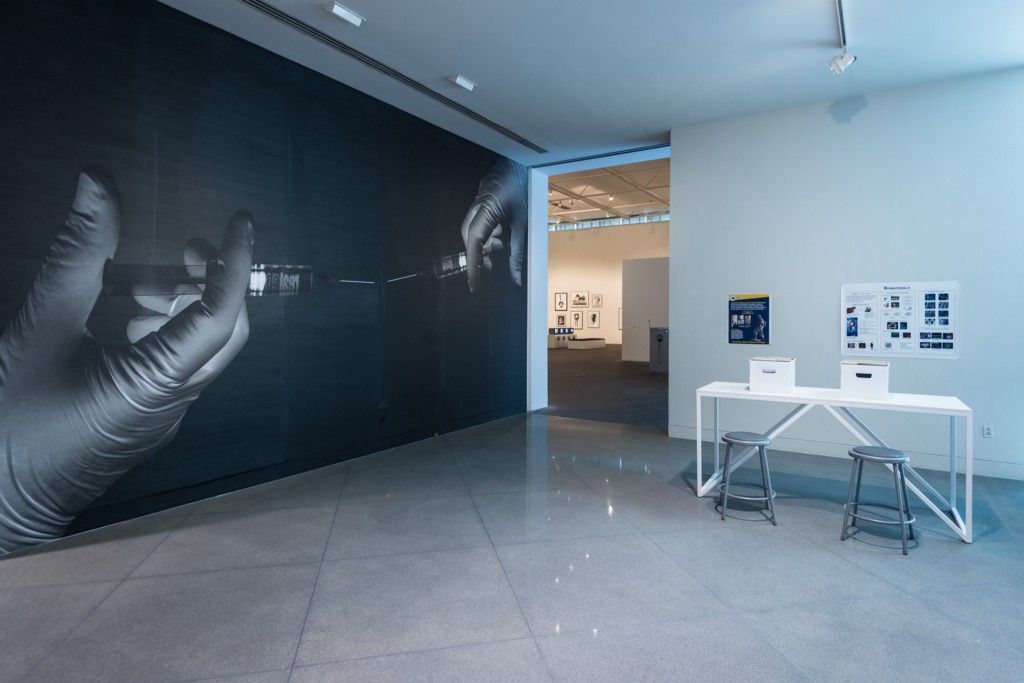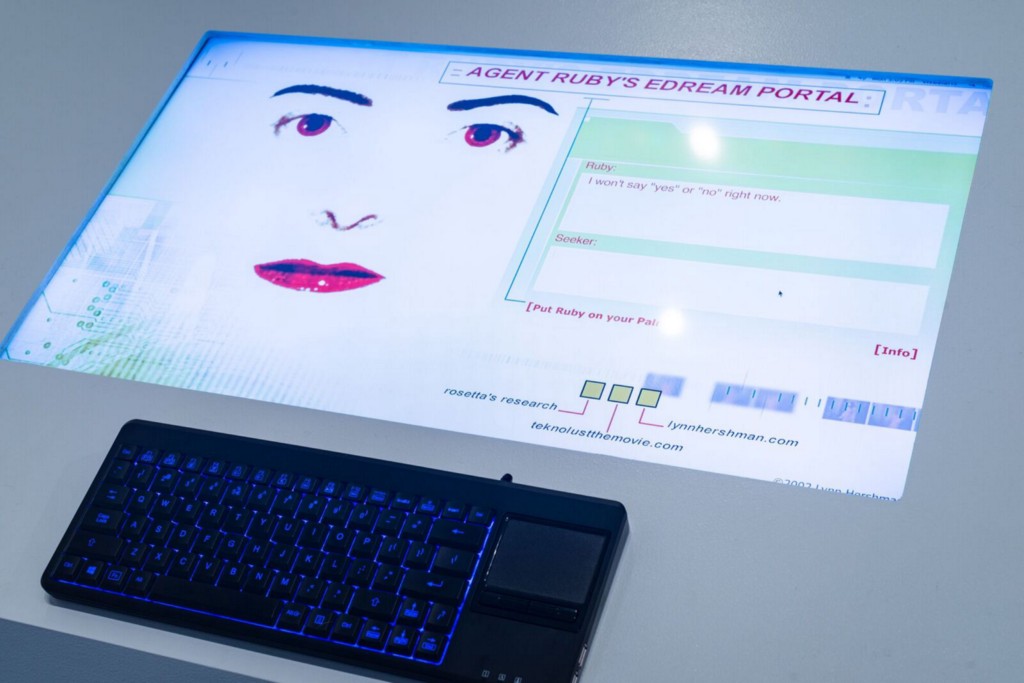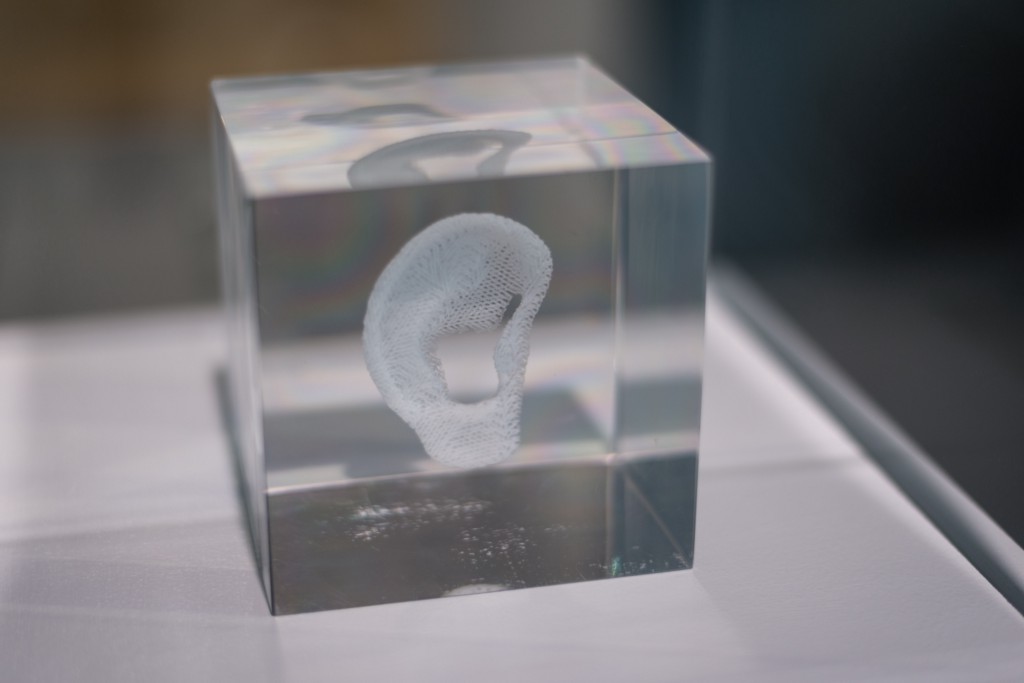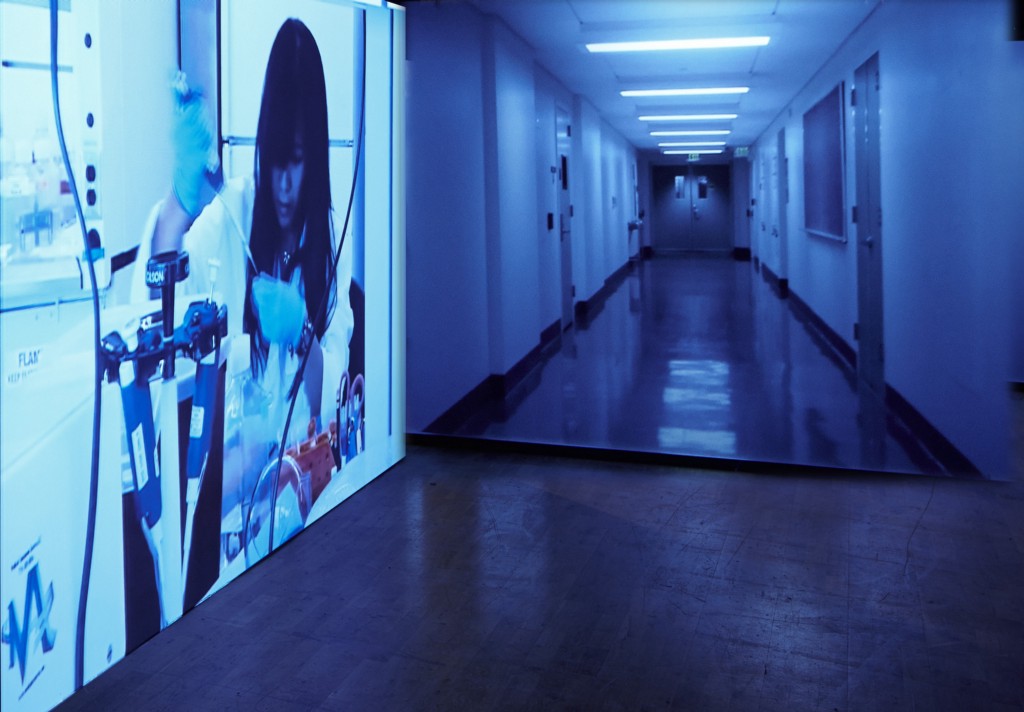This Artist Saw the Neobiological Future Before Any of Us
Lynn Hershman Leeson has spent 40 years grappling with cyborgs, genetically modified organisms, and AI.
Around the time Lynn Hershman Leeson was making her film Tecknolust, the rough draft of the Human Genome project was being finished, the first human embryo was cloned, and the TOR browser was being finalized. That helps explain why ideas about biological destiny and anonymity ran through the movie, which starred Tilda Swinton in multiple roles, including a scientist named Rosetta Stone and three Self-Replicating Automatons that require a constant supply of the Y chromosome (found in semen) in order to live.
For decades, Hershman Leeson has explored the relationships between human identity, science, and surveillance through a feminist lens. In the 1970s she created an alter ego named Roberta Breitmore; in the 1990s she extended that identity into a doll called CybeRoberta, whose camera eyes were a reminder that humans are tethered to and watched by the machines they build.
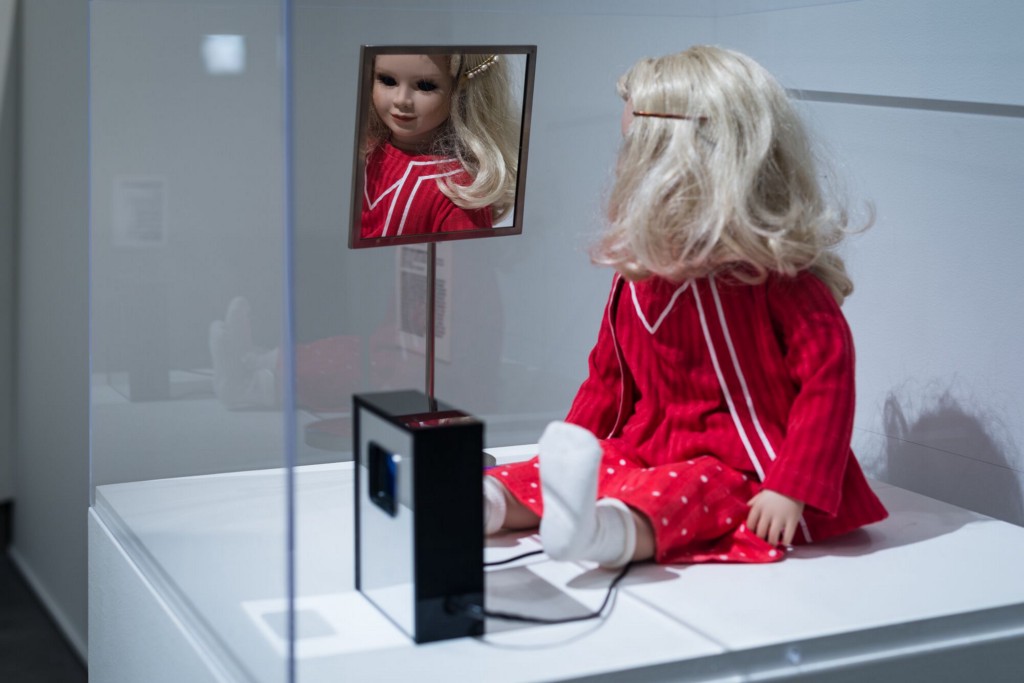
This was recently on display in a solo exhibition of Hershman Leeson’s work, titled Civic Radar, at the Yerba Buena Center for the Arts in San Francisco. The first piece that visitors saw as they entered the main gallery was one of Hershman Leeson’s recent works, “The Infinity Engine.” In part of the work, projections on the walls and mirrors give the illusion of walking down the hallways of a hospital or laboratory; the mirrors slightly distort your reflection, making you a bit elongated. They suggest two worlds, one made rigid by the scientific method and the other full of malleable organisms that technologies can manipulate.
Turning a sharp corner, the viewer was confronted with Hershman Leeson’s reinterpreted Michelangelo’s The Creation of Adam. Instead of Adam and God extending fingertips, two latex-gloved hands and the tips of syringes touch, implying the calculation and design of creation today. To further that point, Leeson’s exhibit included creations from scientists around the world, such as Anthony Atala of the Wake Forest Institute for Regenerative Medicine, who has researched 3-D-printed organs.
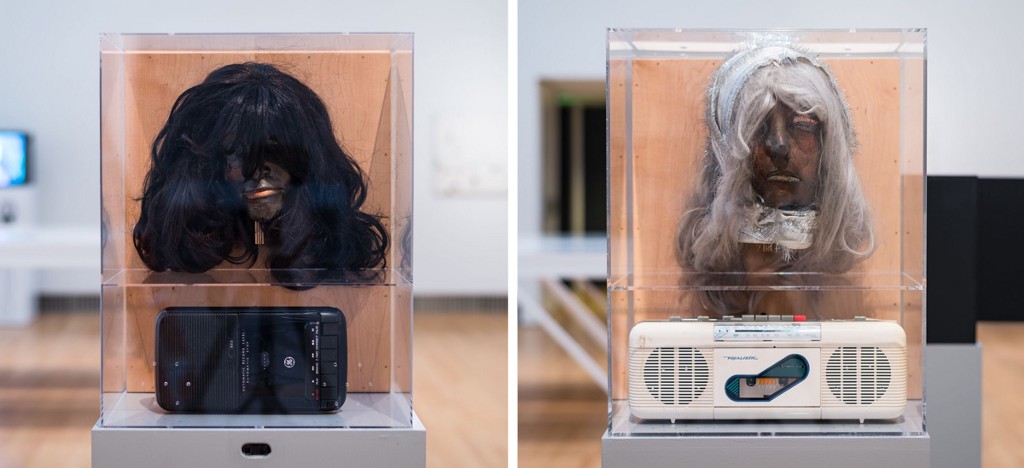
Hershman Leeson’s consultations with scientists led to a part of the “Infinity Engine” that included a seemingly endless array of photos of genetic experiments and advanced technologies. It showed hybrid species and unconventional techniques that could be crucial for human survival—possibilities that are both utopian and dystopian.
So where does she go from here? Deeply inward, apparently. Hershman Leeson says she is working on storing a movie in—and somehow projecting it from—DNA.
